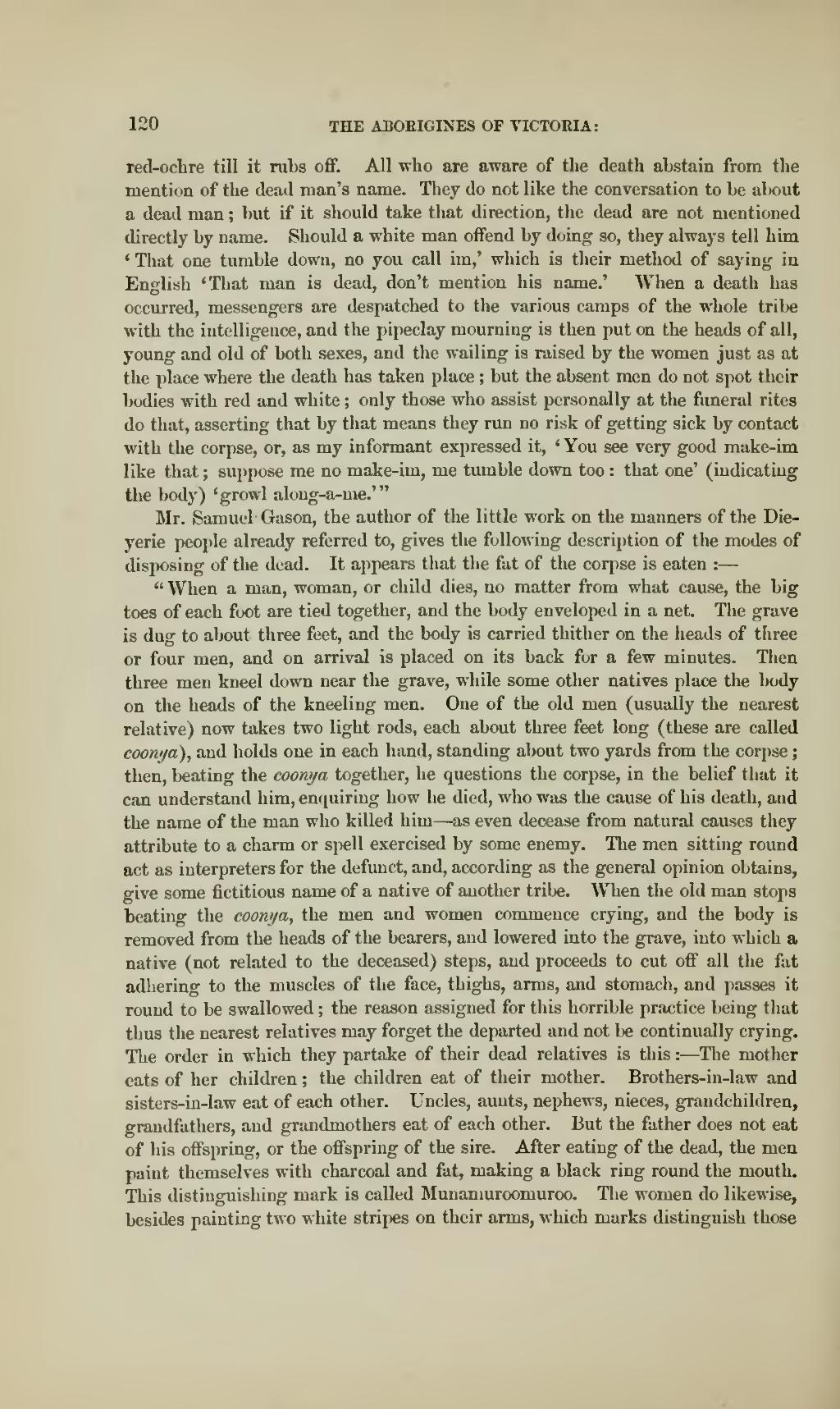red-ochre till it rubs off. All who are aware of the death abstain from the mention of the dead man's name. They do not like the conversation to be about a dead man; but if it should take that direction, the dead are not mentioned directly by name. Should a white man offend by doing so, they always tell him 'That one tumble down, no you call im,' which is their method of saying in English 'That man is dead, don't mention his name.' When a death has occurred, messengers are despatched to the various camps of the whole tribe with the intelligence, and the pipeclay mourning is then put on the heads of all, young and old of both sexes, and the wailing is raised by the women just as at the place where the death has taken place; but the absent men do not spot their bodies with red and white; only those who assist personally at the funeral rites do that, asserting that by that means they run no risk of getting sick by contact with the corpse, or, as my informant expressed it, 'You see very good make-im like that; suppose me no make-im, me tumble down too: that one' (indicating the body) 'growl along-a-me.'"
Mr. Samuel Gason, the author of the little work on the manners of the Dieyerie people already referred to, gives the following description of the modes of disposing of the dead. It appears that the fat of the corpse is eaten:—
"When a man, woman, or child dies, no matter from what cause, the big toes of each foot are tied together, and the body enveloped in a net. The grave is dug to about three feet, and the body is carried thither on the heads of three or four men, and on arrival is placed on its back for a few minutes. Then three men kneel down near the grave, while some other natives place the body on the heads of the kneeling men. One of the old men (usually the nearest relative) now takes two light rods, each about three feet long (these are called coonya), and holds one in each hand, standing about two yards from the corpse; then, beating the coonya together, he questions the corpse, in the belief that it can understand him, enquiring how he died, who was the cause of his death, and the name of the man who killed him—as even decease from natural causes they attribute to a charm or spell exercised by some enemy. The men sitting round act as interpreters for the defunct, and, according as the general opinion obtains, give some fictitious name of a native of another tribe. When the old man stops beating the coonya, the men and women commence crying, and the body is removed from the heads of the bearers, and lowered into the grave, into which a native (not related to the deceased) steps, and proceeds to cut off all the fat adhering to the muscles of the face, thighs, arms, and stomach, and passes it round to be swallowed; the reason assigned for this horrible practice being that thus the nearest relatives may forget the departed and not be continually crying. The order in which they partake of their dead relatives is this:—The mother eats of her children; the children eat of their mother. Brothers-in-law and sisters-in-law eat of each other. Uncles, aunts, nephews, nieces, grandchildren, grandfathers, and grandmothers eat of each other. But the father does not eat of his offspring, or the offspring of the sire. After eating of the dead, the men paint themselves with charcoal and fat, making a black ring round the mouth. This distinguishing mark is called Munamuroomuroo. The women do likewise, besides painting two white stripes on their arms, which marks distinguish those
